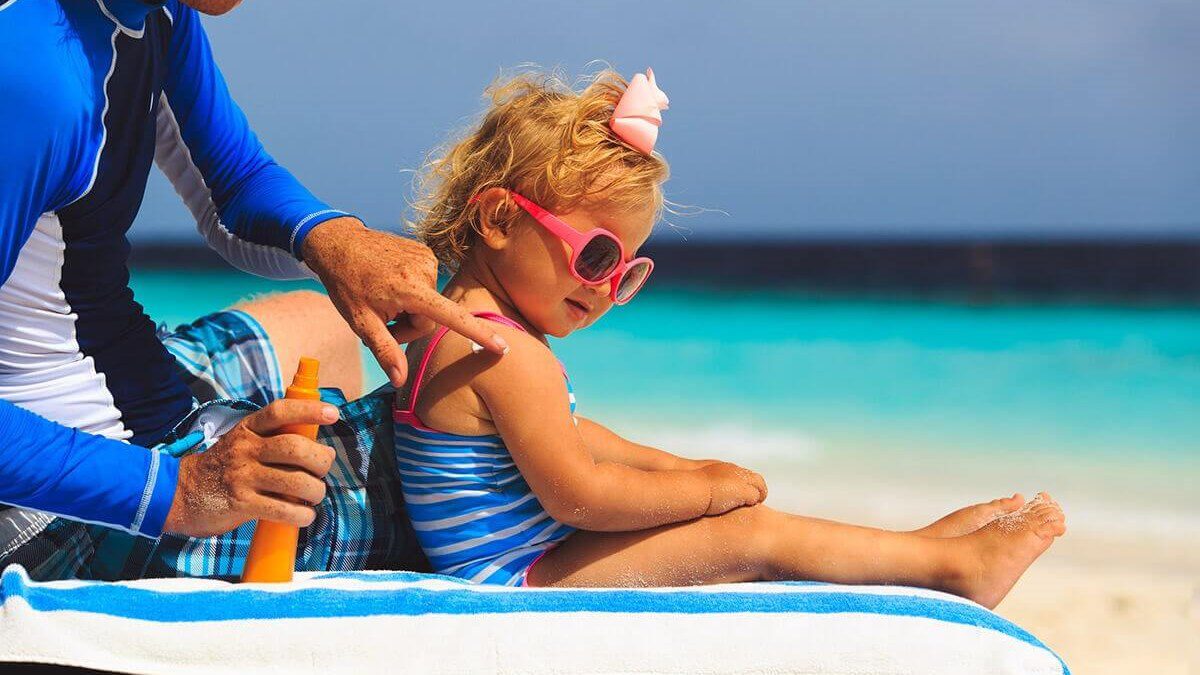Sun Safety Tips

Sun safety tips will help you take precautions that can reduce sun exposure injuries and reduce the chances of developing skin cancer. There are two types of ultraviolet solar radiation that reach the earth — A and B. Both types of rays may cause skin damage or possibly skin cancer. Sun protection factor (SPF) measures the protection that a sunscreen provides against ultraviolet B (UVB) but not ultraviolet A (UVA) rays, which penetrate more deeply into the skin, creating wrinkles. The third type of UV ray is UVC, these rays are blocked by the ozone layer and do not reach the earth.
The high-risk factors that may make sun exposure more dangerous include:
- a family history of skin cancer
- moles on their skin or parents that tend to develop moles
- very fair skin and hair
Infants are also high-risk due to their thinner skin and underdeveloped melanin, therefore their skin can burn easier. The intensity of the sun also plays a vital role. The UV rays are strongest during the summer and during the hours of 10am – 4pm in the northern hemisphere. Cool, overcast and cloudy days may give you a false sense of protection but UV rays still travel through to you and your loved ones so protection is still a necessity. Tanning beds are a big no-no, the risk of melanoma is higher in persons that use a tanning bed before the age of 35. Tanning beds produce UVA or UVA and UVB that cause sunburns. Covering up and using sunscreen is your best protection against harmful sun exposure. When covering up, if you can see your hand inside your clothing, it will not provide the sun protection you need. There are so many options with sunscreen. To protect your child against both types of rays, it is important to look for sunscreens that are labeled “broad spectrum,” or check the ingredients for the four Food and Drug Administration (FDA)-approved UVA blockers: titanium dioxide, zinc oxide, avobenzone, or mexoryl. Use of these products will minimize your child’s exposure to both UVA and UVB rays. Avoid sunscreens with PABA which is known to cause skin allergies.
Please remember the following when applying sunscreen:
- Apply the sunscreen 15 to 30 minutes before going outside
- Reapply every two hours
- Use 1 ounce (amount that will fill a shot glass) to cover all exposed areas of the body
- Remember to also apply to ears, hands, feet, shoulders, under straps, and behind the neck
- Use water resistant when spending time in water and reapply after 80 minutes
- Use before expiration date, if in doubt throw out after three years
The American Academy of Dermatology recommends all children wear 30 SPF or higher regardless of skin color. Remember tanning is a sign of skin damage. Eyes need protection too. Sunglasses with 100% UV protection is the best way to protect the eyes from sun damage. If your child does get a severe sunburn that blisters, bring them into iCare in Frisco or South Fort Worth, with average wait times that are less than 10 minutes.
For minor sunburn relief:
- Cool bath, not cold and cool compresses will provide relief
- Apply aloe vera gel
- Age/weight recommended ibuprofen, acetaminophen or diphenhydramine will help with pain and itching
- Apply moisturizing cream however, avoid petroleum-based products as well as products that contain benzocaine.
Have fun in the sun with the right protection and don’t forget about protecting yourself!
FOLLOW US ON SOCIAL FOR MORE RELEVANT,
LOCAL HEALTH INFORMATION